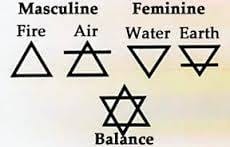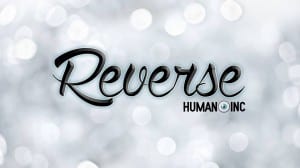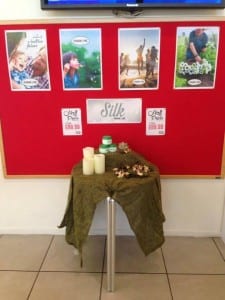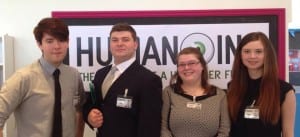Our Site Specific piece was an installation spanning over approximately six hours in the LPAC café on Saturday May 10th. Rather than putting on a show for our audience, we interacted with them in a fake market research setting for the purpose of evaluating their interest in our (fabricated) anti-aging skin cream. The research was part of our fake pharmaceutical company named “Human Inc.”; we specialise in using state of the art science and technology to create longer lasting and better improved healthcare products for “the promise of a healthier future” (our slogan). Our aim is to convince our audience that we are a genuine company and have them willingly participate in our market research by offering them insight into our ‘new products’ and a free sample of “Bliss”, our company’s bottled endorphin rush.
Throughout this project we have developed several potential products including anti-aging skin cream, a bottled endorphin rush and eye drops which can change the colour of the iris among other futuristic merchandise. Though we do not possess the technology or the means to actually create our fantastical products we have invested our time and money into researching the potential ingredients and science behind these goods to make them seem as realistic as possible. Our scientific research will serve as our basic script for the duration for the performance but our general performance style shall be naturalistic and abstain from any character names or traits in the pursuit of a friendly shop assistant persona.
We have encountered several issues during our development process in which we have changed location and performance ideas several times, however I am pleased with our final result and believe that adapting is simply a part of our development as performers.
Our original performance space was to be several abandoned shops in Grantham, the hometown of Isaac Newton. As such our performance topic was to be science in the format of a shop. I knew very little about shopping and even less about science, so when we were told that this work had to be based on the science of Isaac Newton as well as hold to the connotations of a shop I became increasingly concerned with how we would devise a piece to fit this criteria. As a starting point I did some research into the different kinds of laboratories and scientists we could look at under this huge umbrella surrounding Newton’s work. More particularly I looked at the kind of sciences that interest myself; computer science, genetics, chemistry, alchemy, what chemicals reside in the human body; “six elements account for 99% of the mass of the human body: oxygen, carbon, hydrogen, nitrogen, calcium, and phosphorus” (Helmenstine, 2014). During this time I was reminded of an idea that was mentioned in a previous lesson regarding genetics and modifying embryos. I considered the idea of modifying humans with prosthetic limbs and the potential to ‘edit’ humans through genetic engineering. We already genetically modify crops and animals in the name of science, but what would the ethical response be to genetically engineering humans? Currently this technology is being pursued in an effort to eradicate certain health issues but Danielle Simmons raises the question of “designer babies” (Simmons, 2008) wherein the potential to select certain traits in embryos could lead to a “genetic aristocracy” (Simmons, 2008) should these enhancements become available for purchase. I was intrigued by this idea and so continued to pursue the idea of developing a piece around human enhancements and selling ‘The perfect human’.
Our group was formed under the united interest in genetics and human enhancement, this was sub-categorised under “Alchemy”. Alchemy is primarily an ancient chemical science which concerns itself with the pursuit of longevity, the creation of the philosopher’s stone and creating gold from base or raw materials. This is largely done through the transmutation of materials in which, through heat or chemical equation, objects are altered into a more perfect state. Some alchemists hoped that by achieving these three legends they would “finally transmute the human body into an incorruptible ‘body of light’” (Klossowski De Rola, 1973). I looked into the logic behind transmutation circles and discovered that, regardless of the equation, they are always formed of both male and female elements or components in order to create a perfect balance. It tied in perfectly with our theme of ‘creating the perfect human’.
We assembled our resources and knowledge on the subject and thought that the idea of a literal human shop would work best for our theme. Within the shop we would have potential customers tailor their own human model via a series of interactive games and allow them to select the skin tone, eye colour, height, weight and various other characteristics of their model. By giving the audience the option to choose their idea of ‘the perfect human’ we could have them question their perceptions of beauty in regards to modern influences and their own views on beauty. I also think that it would be interesting to see if the audience would question the morals of making ‘the perfect human’ or if they would detach themselves from the ethics in order to complete the task. We decided to name the shop “Human. Inc.”
Tullin, J (2014) Human Inc. Logo
Though our intrigue was sharp our compiled knowledge of the subject was decidedly low. As such we were eager to take up the opportunity to tour the science labs with professors Alan Goddard and Nicola Crewe of the University. Alchemy is widely disregarded in modern science, some describe it as “akin to magic” (Principe, 2013) or “inherently a spiritual endeavour” (Principe, 2013) and so instead we considered the inner workings of biological and chemical reactions within the body to help aid our research. There are chemical reactions happening in our bodies every day, from the digestive system to the output of emotions. Gerasimo describes the process of touch as “the body’s neuronal circuits [being] directly activated, with a peptide reaction proceeding from the body’s surface to the spine and then travelling to the brain and becoming part of conscious awareness” (Gerasimo, 2003). We wanted to make it clear that the choices made by our audience had a deeper structural meaning biologically than simply choosing the colour of the hair. One good way to demonstrate DNA and cellular structure to our audience would be to make posters of microscopic images of fingerprints, eye colour and hair follicles. With this we could accurately show our audience how drastically different the DNA is in each individual and hopefully make them consider the implication of asking them to ‘pick a colour’. Following this line of thought we arranged to meet with Alan for a demonstration of fingerprinting. It is common knowledge that no two fingerprints are the same and even with only 4 participants we would have 40 unique prints to play with. It was this vast array of possibilities that we wanted to showcase to our audience.
With these factors in place the concept of “selling the perfect human” suddenly became a lot more plausible to me however we still lacked the technological means to recreate a physical body other than using our own as examples. Having decided on our idea I started looking at how we could make this performance as realistic as possible by looking into the real science of ‘making a human’. Focusing on DNA manipulation and thinking about our original focal point of alchemy and the longevity of life, I took inspiration from one particular article describing a scientists search for a cure for aging and death. He claimed that “slowing aging, if it can be done, could be a way to prevent many diseases” (Pollack, 2014). This search for longer life may potentially be a more realistic approach for our work than recreating life itself.
In order to demonstrate our progress we developed a short sketch wherein we were able to display some of our research and explore the knowledge and techniques we would carry over to our final piece. The 5 minute performance revolved around the idea of nanotechnology and the potential to use advanced tech to cure degenerative illnesses such as Alzheimer’s. We researched the common effects of neural related diseases and discovered that when the cerebellum is attacked victims often lose motor functions, memory and often can’t complete simple tasks by themselves. It’s a serious and unfortunately common illness.
As an example of our company’s potential, we fabricated a scenario wherein an implant into the cerebellum would identify the healthy brain cells and recreate them, effectively replacing the dead or damaged cells. Through this short piece we implanted the idea that our company worked towards a healthier future for humankind and encouraged the use of ‘medical upgrades’ as we referred to them. Though the experiment was well received it was brought to our attention that degenerative mental illnesses are more common among the older generation and as our audience was likely to be mostly of a younger age it may be more interesting to explore the argument of vanity vs. medical, specifically selling upgrades in the form of bottles and gels like a pharmaceutical company.
Seeing as we could not in fact recreate the technology, we began focussing more on the aesthetics of a shop and potential products we could ‘sell’. We theorised varying ‘products’ such as age reduction skin cream, vocal enhancements and eye drops that could change the colour of your eye. For inspiration we looked at Roche Pharmaceuticals and Pfizer, competing companies in cosmetics and biopharmaceutical research. Both companies boast a wide range of health products and claim their research is for the sake of improving “health and wellbeing at every stage of life” (Pfizer, 2007). It suddenly occurred to us that we could create our own pharmaceutical company whilst maintaining the illusion of striving for perfection. We decided to create a market research survey as a means of interacting with the audience. By using a product as a stimulus we could ask questions regarding what it was the public would like the product to do or include. By posing as a shop it would be very unlikely that we would actually convince people to buy our products, but if we were to conduct research on what people want to see in our products then we would have a much more convincing reason for interacting with our customers.
One of the most difficult challenges we faced during this module was our change of location. Instead of performing in abandoned shops in Grantham we would instead be performing in the LPAC theatre. Although initially disgruntled by this sudden change it dawned on us that the café in the LPAC would make a perfect location for our piece. Having been focussed on the shop atmosphere, to be given the opportunity to use a working shop space was perfect. After looking around and spending some time in our new location, we realised that, while we had always wanted to portray the idea of a professional, our original site was lacking in some fundamentals commonly associated with shops; tables, shelves, chairs, any form of television or display screens to name a few. However, the LPAC not only had these at our disposal, it also came at no extra cost to us. These added amenities would work in favour of our effort to portray the perfect company atmosphere and we were eager to plan our installation with new vigour.
Tullin, J (2014) LPAC cafe
We were reminded regularly that for this piece to be successful we would have to convince our audience that we are an authentic pharmaceutical company. We set about making name badges, posters, buying/creating products to ‘sell’ and even advertising videos with the theme of ‘Human. Inc.: The Promise of a Healthier Future’. Even though we were using pre-existing products for our displays it was important that we came up without own science to explain their functions and properly pass them off as our own products. We would have two products on display and one in production (which would be the focus of our market research survey).
The first product we called ‘Silk’, an organic hair removal cream. In reality this was only a bottle of hand cream, but by telling our audience it contained natural glycerine (to remove the hairs), black truffle extract (to trick the stem cells into creating new skin in place of the hair follicles) and sugar cane (to reach deep into the root of the hair) we could more accurately convince them of our trustworthy nature and add to the illusion that we were in fact a professional company. It also helps to have an actual product to show, even if the contents don’t match the description, it’s beneficial to be able to see and smell the product.
Our second product we named “Bliss”, a bottled adrenaline rush. One of our very first ideas was to sell bottled emotions which are essentially chemical reactions occurring within the brain as a result of external influences; this is an extension of that initial idea. An adrenaline rush is caused by the release of endorphins in the body as a result of excitement, sexual intercourse, food consumption and other similar activities “with high endorphin levels, we feel less pain and fewer negative effects of stress” (MedicineNet, 2007). The theory behind Bliss is to force an endorphin rush through a chemical reaction as opposed to natural stimulus. I also did extensive research into the potential ingredients to re-establish our authenticity. Bliss contains N-Acetyl Cysteine and magnesium sulphate which act as receptor switches, Guarana which contains natural caffeine to boost the heart rate and Forskolin which actually forces the body to rapidly produce endorphins, “forskolin (“Endorphin Enhancers”) that increase endorphin levels” (Pondera 2014). With this the chemical balance is complete and an endorphin rush is triggered which can last up to 4 hours depending on the individuals height and weight.
We decided that, rather than stock it on the shelves, Bliss would work best as a giveaway to our audience, an added treat to persuade them to participate in our survey and a way to ensure that we remain in their minds long after the performance. The most crucial part of this performance would be to act the part. No matter how convincing our props and set, the illusion could only be complete with our well-rehearsed explanation.
The final product we would display is called Reverse, an anti-aging skin cream which will be the focus of our survey. It was important that we at least had an understanding of skin creams in order to accurately portray our aims and ideas for this new product. In actual fact we had already conducted the necessary research into the cream and so all the participants would have to do is pick a scent or price range, a simple task that would still make them feel included in the process.
Tullin, J (2014) Silk Logo
Tullin, J (2014) Reverse Logo
Tullin, J (2014) Human Inc. Products
During our final performance we re-arranged the space to our liking to include three tall tables, a bookshelf or relevant materials and a waiting room with several couches and chairs. We were each armed with the appropriate knowledge and ready to help participants with the survey and to answer any questions they may have had regarding our company and products. Though audience members came in short bursts, we managed to draw in around fifty people, many more than I was expecting. Participants were generally impressed with the formality and professionalism of our company but I feel that the process itself may have been lacking in excitement. It seemed that audience members’ interest began to dwindle with the extensive scientific talk and perhaps an element of mystery or danger regarding the products would make the piece more durable in Grantham.
One thing I was particularly pleased with was the look of the space; the posters, products and general layout helped to affirm our professional look and I believe the use of laptops and tablets throughout the performance helped with our mind-set of futuristic technology. I was also pleased that our level of research was sufficient enough to convince members that our products could well be real and some were even convinced to leave contact details for further product information. Overall feedback was positive; one response said “I was sucked into a world in which companies like yours actually exist” (Tullin, 2014) while another replied “you were friendly, chatty and explained things very well, making me feel comfortable enough to leave my email with you” (Tullin, 2014).
Tullin, J (2014) Human Inc. Display
Tullin, J (2014) Human Inc. Staff
One of the toughest challenges we faced during this performance was the site and duration of the piece. After having been moved to the LPAC, we were initially told that the space would only be available to us for a short time. After the piece unfortunately ran over we were concerned at the pressure we were putting on the staff for extending our stay but were assured that it was only a minor issue. I am also grateful that when we perform again in Grantham the running time will be much shorter; although we gathered a large crowd over the performance period, they often came in short bursts and much of our seven hour piece was spent waiting for someone to interact with.
Throughout Site Specific we have been faced with many difficult or altogether seemingly impossible challenges, none of which we have conquered to the standard I feel we could have given the right assistance or means to do so. I feel that the module as a whole has been far more challenging than I had anticipated and believe that some of its allure was lost in the move from Grantham to the LPAC and in its ever adapting subject content. I hope that when we perform this again in Grantham in September we will be able to rediscover the meaning of “Site Specific” and give our audience a longer lasting impression than our bottled give away and instead leave them questioning the ethics and progression of science in the near future.
Works Cited
Gerasimo, P (2003) Emotional Biochemistry. [online] Available from http://experiencelife.com/article/emotional-biochemistry/ [Accessed 8 May 2014]
Helmenstine, A (2014) Chemical Composition of the Human Body. [online] Available from http://chemistry.about.com/od/chemicalcomposition/a/Chemical-Composition-Of-The-Human-Body.htm [Accessed 5 February 2014].
Klossowski De Rola, s (1973) The secret art of Alchemy. London: Thames and Hudson LTD.
Medicine net (2007) Endorphins: Natural Pain and stress fighters [online] Available from http://www.medicinenet.com/script/main/art.asp?articlekey=55001 [Accessed 3 May 2014]
Pfizer (2007) Pfizer: Working Together for a Healthier World [online] Available from http://www.pfizer.co.uk/ [Accessed 12 May 2014].
Pollack, A. (2014) A Genetic Entrepreneur Set His Sights on Aging and Death [online] Available from http://www.nytimes.com/2014/03/05/business/in-pursuit-of-longevity-a-plan-to-harness-dna-sequencing.html?_r=1 [Accessed 12 May 2014].
Pondera Pharmaceuticals (2014) Why Endorphinate? [online] Available from http://ponderapharma.com/why-endorphinate/ [Accessed 3 May 2014]
Principe, L (2013) The Secrets of Alchemy. London, Chicago: The university of Chicago Press.
Simmons, D (2008) Genetic Inequality: Human Genetic Engineering. [online] Available from http://www.nature.com/scitable/topicpage/genetic-inequality-human-genetic-engineering-768 [Accessed 5 May 2014].
Tullin, J. (2014) Human Inc. Silk Product information [email] Sent to Lauren Brook, 10 May
Tullin, J. (2014) Human Inc. Silk Product information [email] Sent to Sarah Ford, 10 May







